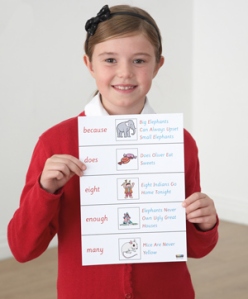 The following list is a summary of successful primary classroom strategies:
The following list is a summary of successful primary classroom strategies:
- A well organised environment with clear routines to minimise movement and noise.
- A good mix of Visual, Auditory and Kinaesthetic activities within each lesson.
- Dyslexic pupils ideally sit within easy eye contact of the teacher.
- Colour coded storage systems (e.g. yellow for Literacy; blue for Numeracy).
- Resource boxes / Goody boxes – lots of visual and hands-on support
- A variety of writing implements including red and blue pens for practising spellings before writing in books (red for vowels; blue for consonants).
- Revisiting reading and spelling strategies at the start of each year and having these displayed for constant reference.
- A selection of high interest/ low reading age texts available.
- Whiteboards with coloured markers to practise spellings and sentences.
- Keyword cards /Days of the week/Months of the year cards.
- Writing planning boards or writing frames.
- Using a variety of recording methods – mind maps, storyboards, flowcharts, video, diagrams, oral presentation.
- Using ICT as a multi-sensory method of working.
- Giving children thinking and talking time.
- Having drinking water available.
- Using ‘buddies’ or ‘peer mentors’ to help with homework / organising.
- Colour photocopies / coloured wallets / coloured reading rulers for use with white paper or reading books to help reduce any visual stress




